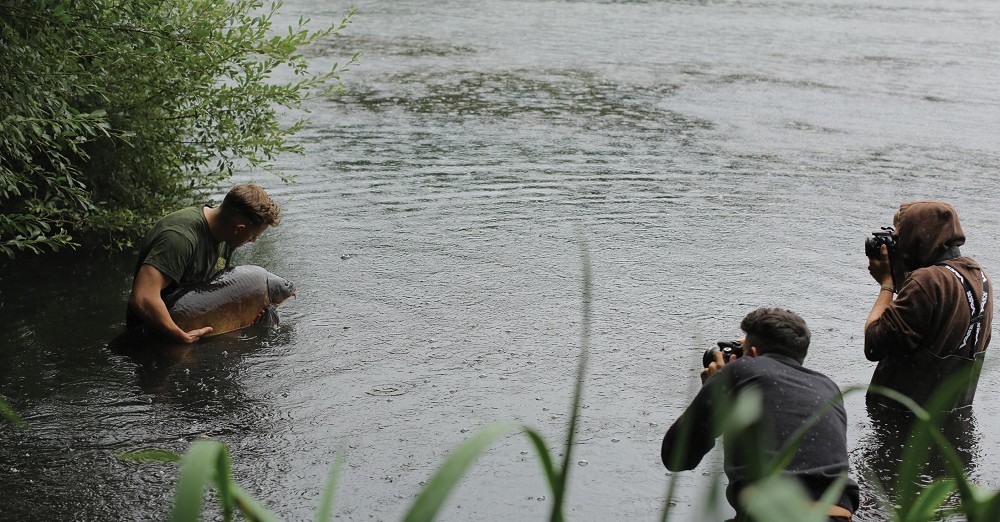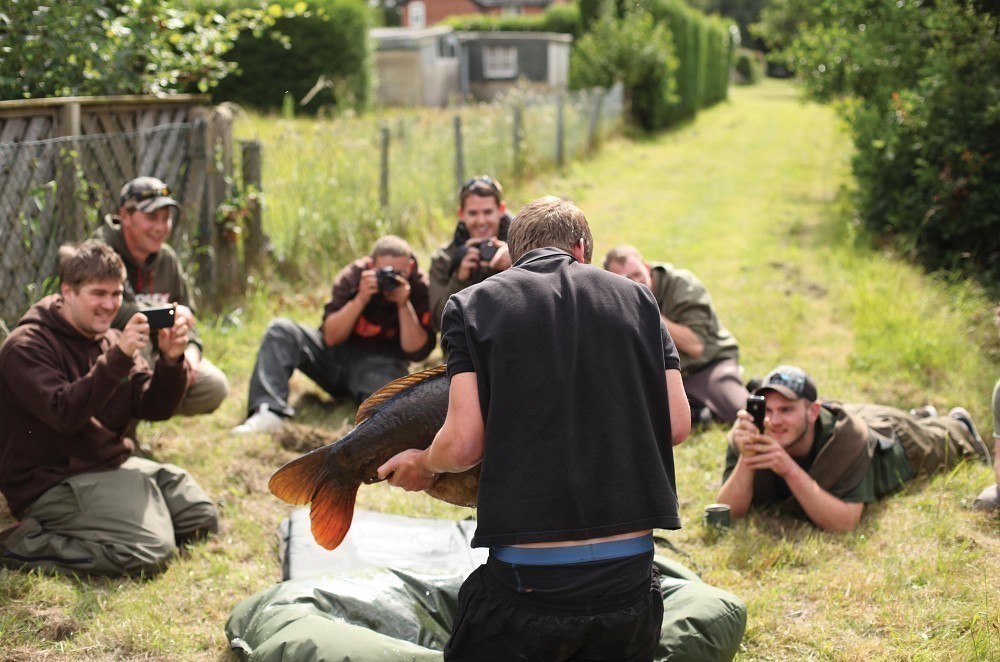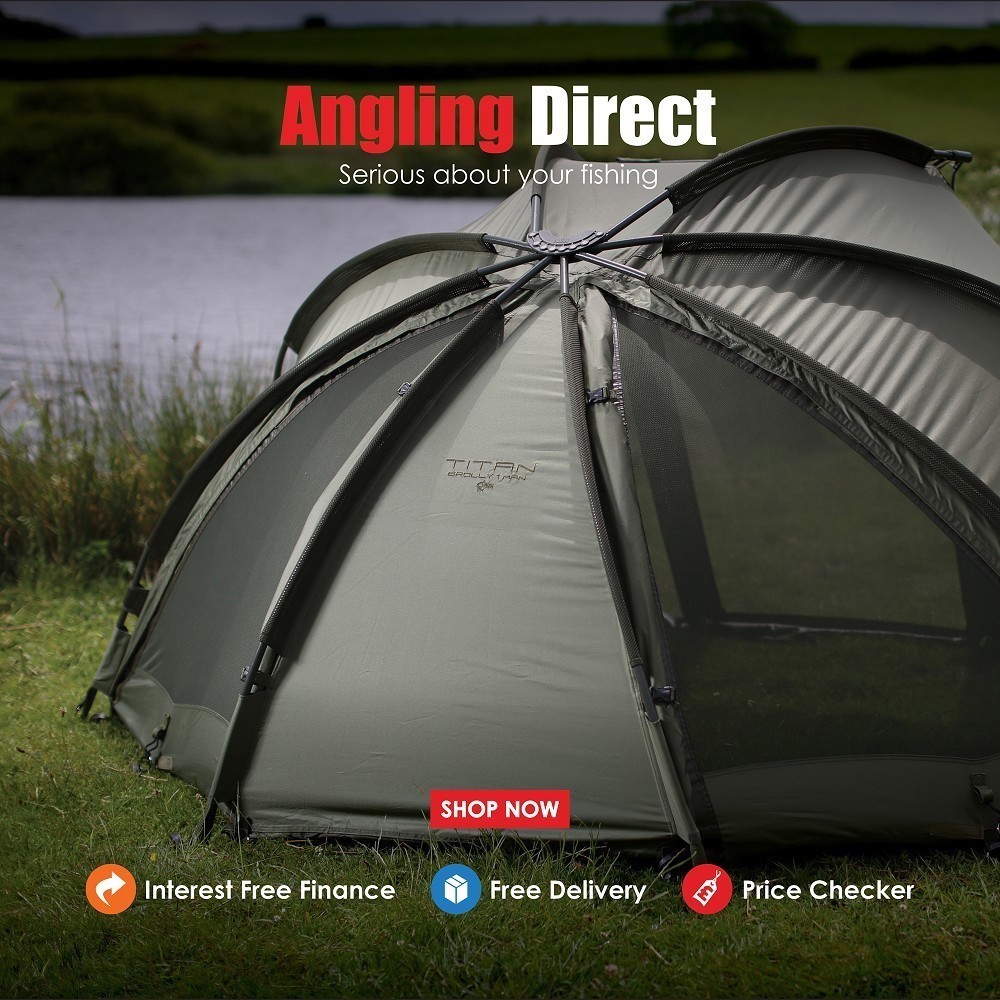
Life behind the lens: Gaz Fareham
We quiz Gaz Fareham, the man behind Subsurface Journal on the lenses he favours and the strangest/scariest locations he’s shot at…
Gaz, being an artist, we’re guessing photography came naturally to you?
“Photography is just something that I have always done. For as long as I can remember it has been part of my life in some way or another and being a photography teacher now, it is something I do every day for a living as well.
“I can’t recall what got me into it originally, at Uni it was all 35mm film work and I used my photography mainly as a resource and starting point for making paintings, but angling-wise, my first recollections of feeling inspired by photography was from seeing some of the shots in Rob Maylin’s Big Carp mag back in the mid-late 90s. There was a really distinctive look and feel to some of the shots in there, and looking back now, a few of the southern lads were already on the 50mm lenses back then and shooting on quality slide film and it showed.
“A lot of carp photography was pretty mediocre, but particularly the images of Tel, Nige and some of the other lads really stood out… lovely tones, dappled light, shallow focus stuff, it made me feel like I was there and more than anything conveyed a sense of atmosphere of the place. It was nothing to do with that now narrow-minded notion of being ‘carpy’, just the fact they were beautiful shots.
“Photography for me is a way to see the world differently, and a vehicle, and excuse I suppose, to take the time to absorb and record things people often miss. It’s in my nature, as an artist, to look hard at things so in that way I guess you could say it comes naturally, as in I don’t feel like photography is something I work at, I just shoot things as I see them.”
So what’s the secret to taking the perfect picture?
“Like Alex said last month, I don’t think there is such a thing. You could argue the only ‘perfect’ picture is one that perfectly matches its intent. That’s something I spend a lot of time talking to my students about, what is your intent? What do you want your images to convey, and why? Do you want them to be sharp, or soft, or dreamy and ethereal, or dark and moody, or deadpan? There’s a thousand ways to shoot, and if I’m honest, I actually quite dislike ‘perfect’ images and whilst technical capability will allow you to take sharp, well exposed images, that is only a small part of what goes into making a great shot I think.
“I like lots of different types of work, but I have always been drawn to the gritty, grainy, dirty images and a lot of what I like is probably well outside the realms of what most people would consider a ‘perfect’ shot. To me, an image has to convey a sense of feel, otherwise I’m not usually that interested. Of course there is a time and a place for technical qualities, and when I’m taking capture shots for someone I do my best to get them a nice set of sharp, well exposed and well framed images as that is what most people want, and that is your job (as a photographer) in that situation, but personally I much prefer shots that make me feel like I was there somehow.
“Once you’ve got the technical aspects of making images down, the rest is just about how you see things, where you put yourself and essentially what you notice. To me, the ‘perfect’ shot is one that captures a sense of what it felt like to be there.”
What do you enjoy shooting most: capture shots, scenics, social shots - or moments completely outside of fishing - i.e. music events/gigs?
“I like shooting carp-related stuff, but there are plenty of trips when I don’t even get my camera out of the bag. I have to feel inspired to take shots and won’t just shoot for the sake of it, so unless the situation or light is pretty special, I don’t bother. I have hardly anything other than captures from Roach Pit for example, as it just wasn’t an aesthetic pit, so I rarely felt inspired to shoot there. It is hard to shoot a sunset or sunrise that isn’t just a cliché these days, so I try to avoid those as well. I love shooting captures for other people, and once I’ve got a few nice ‘stock’ shots in the bag I enjoy playing with different angles. I love shooting the gig work and get a massive buzz from that, especially the really up close and personal punk stuff. Getting yourself right in there, up on stage, avoiding getting kicked or punched, or guillotined by the mic cord and getting super tight wides is great, I love it.”
How do you tend to shoot? Do you vary your shots or do you follow the current trend of shooting with a very narrow depth of field?
“It’s funny really, carp fishing is a long way behind everything else creatively. The skate, surf and riding worlds have been pushing their documentation forwards in progressive, creative ways for the last twenty years or more, carp fishing only just seems to have cottoned on to the fact that a photo can be a bit more than a trophy shot and a token sunset. Looking back to those old shots in Big Carp, some of the lads were using the fixed 50’s probably back in the mid-late 90s or even earlier, and the capabilities for a shallow depth of field those lenses offer was one of the things that made the shots distinctive. That ‘look’ is everywhere now, but it has taken a hell of a long time to get into the mainstream. In the rest of the photography world, shooting with a shallow depth of field is far from unusual or trendy, it is an incredibly standard and old hat way of shooting a portrait as it focuses the attention on just one part of the image.
“I try and vary how I shoot and use the right settings for the shot, so if it needs a deep depth of field then I’ll shoot like that, or if I want to play with something more dreamy I might stop it right down and shoot shallow. The shallow DOF stuff does get pretty predictable pretty quickly if you’re not careful, but used well, in the right situation, it looks great.”
What’s the strangest/scariest location you’ve shot at?
“It would have to be the gig work, the Gallows gig in Bristol I shot was pretty wild. Frank Carter (the lead singer) is known for being pretty crazy and getting involved with the crowd… he’s usually bleeding by the end of a gig. I got my flash head kicked off that night, and I’ve lost a few diffusers. I should tape them on really but always forget! I just love that energy and there’s nothing quite like being in the middle of the maelstrom shooting.”
Can you talk us through your camera equipment?
“I have a 5D MK3 now, which I bought fairly recently from Oli Davies, so it’s been around and seen a few sights already that body. I pair that with two lenses, an f1.2 50mm L Series Canon and also a 17-40mm L Series Canon, both are absolutely superb and do the different jobs brilliantly. I use the 50 for captures, and the 17-40 for scenics usually. I also have a Speedlite 430 EX11 external flash as the 5D’s don’t have an integral one and I have a few circular polarizing filters which are great for taking glare away and getting beautiful deep skies and tones in bright sunlight.
“Added to that, I also have an old Canon EOS that I shoot the occasional bit of 35mm film through, and I also have an Olympus Trip 35 which I use for bits of street photography and my own work that I prefer shooting on film. I’ve got a couple of Polaroid cameras as well which are fun to shoot on, it’s just a shame that film is so expensive these days.”
Can you see yourself buying more lenses?
“I would like to, yes. The two I have currently do serve most of my purposes, but I would like a zoom as it would offer a bit more range now and again. I don’t usually find I need anything more for my angling work, but for street photography
a zoom is great as you can shoot far tighter portraits from a bit of a distance - ideal when you are not shooting with consent!”
How much work do you do to your images in post-production and what software do you use?
“I try and avoid doing too much in post, if anything it is usually just a minor correction of the levels or colours in Photoshop. I have been meaning to get Lightroom for years now, but have been using PS for a really long time now and it serves all my purposes. I have a couple of presets that I use and the slightly darker tones, subtle vignettes and contrast was something we used a lot with Subsurface as I wanted a cohesive look and feel to it all although I admit I don’t use it as much now as it doesn’t look quite so original any more. It is funny as there is a bit of a resistance in carp fishing sometimes to the idea of any post-production or toning (hashtag no filter…), but again it is something that most professional photographers do all the time and almost any image you see in a publication of any quality will have had some amount of post-production work done. Cameras are only capable of doing so much, and depending on how you are reading the light, they will sway an image one way or another to try and expose one part correctly. A camera records what it sees, in a flawed manner, toning, and post is one way you can correct the inadequacies of metering and also put your own mark on an image. I teach loads of Photoshop skills at work, but I’m always drawn to encouraging students to do as little as possible with it, and to try and take as good a shot as possible first, so any post can be a light touch.”
 A favourite, purely because of the moment it captured. Mates all sharing the buzz. I like the fact the carp stays relatively hidden and think the shot is all the more powerful for it
A favourite, purely because of the moment it captured. Mates all sharing the buzz. I like the fact the carp stays relatively hidden and think the shot is all the more powerful for itHow do you see your photography progressing? What areas do you want to improve in?
“In terms of my angling photography, I’d like to find a way to push things further now. The close ups, tail and fin shots and all that sort of thing are beautiful, but that is already becoming played out and a bit cliché now. That’s the thing with keeping something progressive, that cycle never really stops, and so once something has been done, and is everywhere you have to move it forwards. Carp angling is pretty limited in some ways as the landscape and subject is often relatively similar, so I think you do have to be pretty creative to do anything original with it. There’s some genuinely amazing photography out there now, and I see a few shots on my Instagram feed from the likes of Tom Ter Weele that continually reinvent what compositions can look like, it’s great to see the next generation pushing things forwards and making some of the most interesting things out there.
“I’d like to shoot more film, and through some old glass to get some really grainy, dirty looking images, things that manage to convey what 4am in the heat of the summer, mozzie bitten and sleep deprived feels like. I also want to shoot more gig work, and start putting together some photo books as well when I get chance.”
Finally, what’s your all-time favourite shot and why?
“I love Frank Warwick’s old shot of Redesmere’s meadow in the snow, with the dirty, muddy trails in the snow leading back to the snow-covered brollies, that somehow encapsulated the madness of carp fishing for me. My own favourite shot… I’m not sure, in recent times possibly the one of Plug with his Roach Pit 50. Technically it’s not the greatest shot at all, but the angle, huge backend of a fifty-pounder poking out and the smiles from the crowd of photographers just sums up the big carp scene to me so well.”





